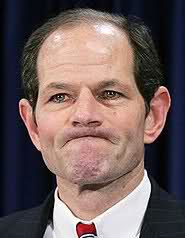By John Ray (M.A.; Ph.D.)
The simple answer that modern scholarship gives to the above question is: No. But let us look very briefly at some of the reasons why.
The most basic reason is that Fascism/Nazism was deliberately NOT class-based. The great claim of Fascism was that it was NATIONAL. Its major difference from other forms of Leftism was its REJECTION of class war and other forms of class antagonism. It was a "one big happy family" form of Leftism -- or at least that is what its propaganda represented it as aiming at. Given that aim it is no wonder that it achieved exactly what it intended. It did indeed appeal to lots of people in all social classes. But Leftism has always appealed particularly to the working class, so there was also some tendency for the really keen Fascists to be preponderantly working-class, as we shall see.
The claim that Fascism/Nazism was "bourgeois" or middle-class is just knee-jerk Marxism. Marxists are (or at least long were) class-obsessed and "bourgeois" is how they were accustomed to characterize almost anything they disapproved of. And the fact that "one big happy family" Leftists bitterly opposed "class-war" Leftists should surely come as no surprise at all. But let us look at what happened in Germany and Italy separately.
Italy
The commonest Marxist analysis of Italian Fascism seems to be that it was the last gasp of a failing middle class in its desperate struggle to hold onto its position against the rising tide of the working class. Since the leading Marxists themselves -- from Marx and Engels, through Lenin to Pol Pot have themselves always been middle class, this analysis has its amusing side. The perennial Leftist tactic of accusing others of what is in fact true of themselves would alone account for that characterization of Fascism. But is the characterization nonetheless true? There is much to say that it is not. The breadth of Mussolini's appeal is in fact one of the most remarkable things about him. The Fascists certainly included many middle class people but they included workers and aristocrats as well. Even Jews were prominent among them! But rather than attempt to plough through the arguments in detail here, let me just quote a summary of what Michael Mann, a respected Left-leaning historian of Fascism, says on the subject:
In Fascists, Mr. Mann contends that the rise of right-wing authoritarian movements between the world wars can best be understood as, in effect, nation-statism forging not a cage but a concentration camp. His analysis puts him at odds with the Marxist interpretation of fascism, which treats it as a violent effort to preserve capitalism from the challenge of left-wing mobilizations following World War I. Mr. Mann also rejects efforts to treat fascism as a totalitarian "political religion" emerging in reaction against modernization and democracy.
All of Europe underwent severe economic crisis in the period between the wars, he notes. But fascists made no serious bid for power in countries where the state had both well-established institutions of representative democracy and a solid basis of infrastructural power. In England, for example, the black-shirted members of Oswald Mosley's British Union of Fascists were exotic and attention-grabbing, but ineffectual at much besides outbursts of street hooliganism.....
Mr. Mann also says that "the degree of capitalist support for fascist movements . varied considerably between the different countries." What was consistent, however, was that the core fascist constituencies had strong vested interests in the growth and dynamism of the nation-state. "Soldiers and veterans above all, but also civil servants, teachers, and public-sector manual workers were all disproportionately fascist in almost all the countries of mass fascism," he writes. Students, too, were always heavily represented.
Mr. Mann contends that, important as economic factors were, they are insufficient to understanding the movement. Consider the contrast between Hungary and Romania. "Hungary had probably the worst middle-class job prospects, Romania the best," writes Mr. Mann, "yet both produced fascism among those most affected, students and public-sector workers." He also notes that in both countries fascists "recruited more from proletarian than bourgeois backgrounds."
More here
De Felice, (1977, p. 176) too says that Mussolini found supporters and adversaries in all social classes. And particularly in the early years of Fascism, Mussolini often attacked the bourgeoisie in his speeches! And I suppose I should mention that Mussolini was the son of an impoverished blacksmith and that he worked alongside his father in his youth. Working-class enough?
This comment from a detailed history of the intellectual origins of Fascism is also very much to the point:
"Leftists often imagine that Fascists were afraid of a revolutionary working-class. Nothing could be more comically mistaken. Most of the early Fascist leaders had spent years trying to get the workers to become revolutionary. As late as June 1914, Mussolini took part enthusiastically, at risk of his own life and limb, in the violent and confrontational "red week." The initiators of Fascism were mostly seasoned anti-capitalist militants who had time and again given the working class the benefit of the doubt. The working class, by not becoming revolutionary, had let these revolutionaries down".
So Mussolini did eventually learn from experience and offered the workers a much cosier form of Leftism: The "we will look after you" promise that Leftists still dangle in front of people to this day -- combined with a "aren't we great?" message that was bound to win broad agreement. And that combination lay at the core of Fascism -- that was what the "one big happy family" of Fascism offered.
Germany
The usual Marxist claim that Nazism and Fascism were overwhelmingly "bourgeois" (middle-class) and lacked appeal to the working-class has been a major stratagem that Leftists use to deny that Nazism and Fascism were in fact "socialist". But as Heiden (1939) and others point out at length, Hitler was a hobo until 1914 so how does a hobo get to lead a middle-class movement?
And both Roberts (1938) and Heiden (1939) -- prewar anti-Nazi writers -- portray Hitler as widely revered and popular among the Germans of their day. As Heiden (1939, p. 98) put it: "The great masses of the people did not merely put up with National Socialism. They welcomed it". And Madden (1987) presents modern-day scholarly evidence derived from archival research to show that Nazis came from all social classes in large numbers. Perhaps most useful is the work of Fischer (1978), who looked at the class composition of the most active and committed Nazi group -- the members of the Sturm Abteilung (S.A., Stormtroopers, Brownshirts). He found that "the workers are over-represented in the S.A." (p. 140). In fact, in the 1933-1934 period, 69.9% of the S.A. were working class compared to 53.2% in the overall German population of that time. The Marxist claim is, then, utter nonsense and, as usual, the opposite of the truth.
And as Von Mises wrote in 1940:
"Unless we are utterly oblivious to the facts, we must realize that the German workers are the most reliable supporters of the Hitler regime. Nazism has won them over completely by eliminating unemployment and by reducing the entrepreneurs to the status of shop managers (Betriebsfuehrer). Big business, shopkeepers, and peasants are disappointed. Labor is well satisfied and will stand by Hitler, unless the war takes a turn which would destroy their hope for a better life after the peace treaty. Only military reverses can deprive Hitler of the backing of the German workers.
The fact that the capitalists and entrepreneurs, faced with the alternative of Communism or Nazism, chose the latter, does not require any further explanation. They preferred to live as shop managers under Hitler than to be "liquidated" as "bourgeois" by Stalin. Capitalists don't like to be killed any more than other people do"
The most recent scholarly reference on the subject would appear to be Fischer (1996) -- reviewed here. From the review:
"In the past fifteen years, the long-entrenched thesis that National Socialism represented the revolt of the Mittelstand [middle-class, bourgeoisie] has undergone decisive revision. Although few historians would deny the Nazi party's success among the German middle classes in recruiting party members and drawing voters, sophisticated statistical work, much of it drawn from newly-explored regional archives, has shown that the Nazi constituency was much more diverse than once imagined. Recent scholarship now argues that support for the Hitler movement extended to all social classes. Moreover, although the Nazi party performed especially well in Protestant regions, it did not fail to attract Catholics. In short, National Socialism evolved into a genuine Volkspartei [party for the whole of the people] that transcended the class and milieu-based politics of the Weimar period....
Brustein's and Mai's essays, as well as Boak's piece on working-class women, delineate the promises that the Nazis marshalled, such as job creation, the resettlement of bankrupt estates, autarky, the eight-hour day, the extension of social security, and economic security for families.
Second, forty percent of the Nazi electorate consisted of workers, the biggest contingent of whom were laborers from heavily Protestant rural districts. Moreover, workers joined the party and its affiliated organizations--the SA and NSBO--in large numbers, although among the new members skilled and semi-skilled workers from such secondary sector industries as construction, wood working, metal works and transport predominated. In no way were Nazi workers "marginal" or "atypical" of their class, the authors of these essays collectively insist....
Finally, the editor's conclusion identifies what Fischer believes is the most significant implication of recent research. Despite proposals that the party become specifically geared to workers, "class political objectives of the old style" played little role in the formation of the Nazi working-class constituency. Instead, the party's voelkisch ideology stressed social harmony rather than class struggle. The Nazi party's long-underrated ability to attract working class voters and members demonstrates that "class and sectional politics, whether middle or working class, reached the end of the road in Germany during the closing years of the Weimar Republic." The Hitler movement thus anticipated what would become the dominant pattern after 1945--integrationist, consensus-forming parties that transcended the particular interests that so fractured Weimar politics (pp. 242-3).
These essays conveniently package the sort of evidence that has shown beyond a shadow of a doubt that the Nazis, unlike other German political parties up to that time, cut across class, regional, and religious lines...."
In short, the Nazi party was exactly what Hitler called it and designed it to be -- a national party -- something the other two major parties of the German Left (SPD and KPD) at that time were certainly not.
I cover other aspects of German Nazism here and other aspects of Italian Fascism here. The American variant of Fascism is covered here.
References:
De Felice, R. (1977) Interpretations of Fascism Cambridge, Mass.: Harvard U.P.
Fischer, C.J. (1978) The occupational background of the S.A.'s rank and file membership during the depression years , 1929 to mid-1934. In: Stachura, P. The shaping of the Nazi state. London: Croom Helm.
Fischer, C. J. Ed. (1996) The Rise of National Socialism and the Working Classes in Weimar Germany. Providence/Oxford: Berghahn Books.
Heiden, K. (1939) One man against Europe Harmondsworth, Mddx.: Penguin
Madden, P. (1987) The social class origins of Nazi party members as determined by occupations, 1919-1933. Social Science Quarterly 68, 263-280.
Roberts, S.H. (1938) The house that Hitler built N.Y.: Harper.











No comments:
Post a Comment